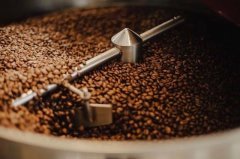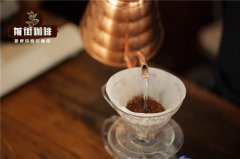Seven reasons affecting the aroma and flavor of coffee: the brewing method of environmental roasting degree of coffee beans
As coffee lovers, we know that you can find a wide range of features in coffee. From simple tones to sweet fruit, to flowers and tea, our favorite drinks bring an incredible taste experience. But what determines the flavor of your coffee?
There is no simple answer to this question. The science behind the flavor of coffee is still in its early stages, and we are just beginning to understand what is happening at the chemical level. There may be factors that we are not aware of, and no one is sure exactly how much impact each step in the coffee supply chain has on the final product. Nevertheless, we do now know what some of the most important factors are.
Most coffee lovers may say some of these factors that affect flavor from their minds. Everyone knows that baking characteristics are important, and most of our customers tend to consider origin. In this article, Qianjie will introduce you to the different reasons for coffee flavor from the source of coffee production to the last step of coffee.
1. Variety
Even before the plants that produce coffee fruits begin to grow, there is a very important factor that affects the crop-the variety. This is not as simple as Arabica and Robusta (we usually recommend staying away from the latter). Among the Arabica species, there are dozens of known varieties, and over time, more varieties have been discovered and created.
Wine lovers will tell you that variety has a great influence on the taste of the glass. Cabernet Sauvignon has very different characteristics from Shenzo or Riesling. Similarly, in coffee, the variety (or combination) of your coffee will have a significant impact on your experience as a drinker.
As Rosetta Roastery's Jono pointed out in a recent Coffee Brewmance podcast, many coffee lovers may not fully consider and talk about this important factor.
2. Wind and soil
Whether you are talking about wine or coffee, style is one of the noble terms that can alienate some people, but in fact, it is only the influence of the place where coffee is grown. We all know that the taste of Kenyan coffee is very different from that of Brazilian coffee. We also know that coffee from nearby areas may have similarities. All these are the result of the influence of local soil.
Of course, the specific factors that affect the local conditions of coffee flavor are numerous and complex, but here are some important factors:
Height
Climate
Soil type
Soil microbiome
Topography
Of course, we are not suggesting that you need to know every element of the local culture of every kind of coffee you drink, but if you want to know the source of the coffee and some of the defining characteristics of the local style, it is helpful to better understand your coffee.
3. Farming methods
As an end consumer, perhaps one of the most important and difficult factors to master, coffee farming practices will have a huge impact on the taste of the coffee you drink. Everything from the use of chemicals to planting patterns and pruning schemes will eventually affect the nature of crops.
A particularly important agricultural practice is picking. Like other crops, coffee is best picked at the best maturity, but of course, the ripening rate of coffee cherries is not uniform. This means that in order to get the best results, cherries must be picked by trained workers who will pay attention to the maturity of the harvest.
Commercial grade coffee is usually picked directly (that is, picking a whole bunch of fruit at a time) or by machine, which means that the final product is a combination of ripe and immature fruit. Although it's cheaper, it doesn't produce high-quality coffee!
Other resources:
Wikipedia article on coffee production: https: / / en.wikipedia.org/wiki/Coffee_production
Perfect daily grinding: professional coffee and commercial coffee
4. Processing
After picking the coffee fruit, the coffee seeds must be dried before they can be transported and eventually roasted by local manual roasters. The way you do this can be very different and can have a huge impact on the final taste of the coffee. Although this is a complex topic in itself, there are several categories to note:
Natural or dry coffee
Natural / drying is a traditional coffee processing method in Africa. In this method, coffee is actually dried while it is still in the fruit. The advantage of this is that it does not require a lot of tap water and allows more natural sugar in coffee fruits to enter the roasted coffee beans. Naturally processed coffee tends to have a fruity flavor and low acidity, but they are sometimes found to be less transparent.
Although this method of processing may be more economical in implementation, it has a higher risk of crop corruption and cherries must often be flipped manually to minimize this risk.
Coffee washed or processed by wet method
This more modern method of processing involves simply fermenting coffee cherries and then removing seeds from the fruit or pulp-"washing". The advantage of this method is that the outer fruity layer can eliminate some of the risk of deterioration.
Washed coffee tends to have higher acidity and higher clarity, which make them very popular in the third wave of coffee.
Honey processing and everything in between
Recognizing the benefits of both wet and dry processing, a third method or set of methods for handling coffee has emerged, aimed at balancing the benefits of the two methods. In very simple terms, honey-processed coffee removes some but not all of the outer layers of the coffee fruit when it is dried.
There are many different styles of coffee processing, usually referred to by the color of the final dried crops (yellow, red, black), and in most cases, they only need to remove different amounts of external mucus.
Note that not all processing methods fall entirely into these categories-see other resources below
5. Baking degree
We may enter more familiar areas here, but that doesn't mean we shouldn't carefully consider the effect of baking characteristics on flavor. Even the most talented bakers can't use shoddy green and make it delicious, but an unskilled baker is sure to ruin a lot.
After purchase and selection, the roaster helps to realize the full potential of coffee by carefully crafting roasting profiles that are suitable for this group of coffee beans. This is not as simple as light or dark colors-on the contrary, the color of the barbecue can be misleading. The roaster must fine-tune variables such as baking time, charging temperature, rising rate, drum speed, air flow and cooling rate, while responding to temperature records, first and second bursting time and, most importantly, sensory experience.
6. Match the flavor
A few decades ago, most of the coffee drunk in the world was mixed. While this may still be the case in the coffee industry as a whole, single source is becoming increasingly popular in the professional field. This is probably because they allow drinkers to experience the fruits of coffee farmers' labor (literally).
Nevertheless, mixing itself can be a superb craftsmanship. In its basic form, it ensures a more consistent flavor experience throughout the year, as the mixed input varies with the season. At best, the mixture can be a unique taste experience, and its wind taste is not just the sum of its components.
7. Make and cook
Last but not least, brewing is the final stage of the process from soil to taste, which also has an important impact on the flavor of coffee. One mistake made by new coffee lovers is to assume that exactly the same brewing parameters will bring the best results in each type of coffee. "what is your Philharmonic formula?" It must be a common problem among new enthusiasts.
Any barista will tell you that your brewing variables need to match the coffee you brew and how you brew it. In the case of espresso, they may even need to be adjusted to respond to environmental conditions such as temperature, humidity and altitude. Even in a simple manual brewing method, the change in the brewing variable can be a decent and delicious difference.
Some important variables are:
Brewing ratio (water and coffee)
Grinding size (and uniformity)
Extraction time
Water temperature
Important Notice :
前街咖啡 FrontStreet Coffee has moved to new addredd:
FrontStreet Coffee Address: 315,Donghua East Road,GuangZhou
Tel:020 38364473
- Prev

How Roast Degree of Coffee Affects Coffee Flavor What is Roast Degree of Espresso Roast Color
After the original quality of coffee beans, coffee roasting is the most important factor affecting flavor. Baking is a dynamic cause and effect in which baking degree is an important variable, which seems easy to understand but is quite challenging to apply. It takes years of training to be able to read coffee beans and make instant decisions. Perfect roast and bad coffee beans are often only a few seconds away.
- Next

The difference between Coffee Powder and Instant Coffee Why instant coffee is completely soluble in water and concentrated coffee flavor
The type of coffee you use will determine whether the coffee is soluble in water. If you use instant coffee particles, the coffee will only be completely soluble in water. If you use ground coffee beans, the coffee will not dissolve completely, only 30% will dissolve, and 70% will remain intact. This is the freshly ground coffee powder, although instant coffee because of its strong flavor, dry texture and solubility
Related
- Detailed explanation of Jadeite planting Land in Panamanian Jadeite Manor introduction to the grading system of Jadeite competitive bidding, Red bid, Green bid and Rose Summer
- Story of Coffee planting in Brenka region of Costa Rica Stonehenge Manor anaerobic heavy honey treatment of flavor mouth
- What's on the barrel of Blue Mountain Coffee beans?
- Can American coffee also pull flowers? How to use hot American style to pull out a good-looking pattern?
- Can you make a cold extract with coffee beans? What is the right proportion for cold-extracted coffee formula?
- Indonesian PWN Gold Mandrine Coffee Origin Features Flavor How to Chong? Mandolin coffee is American.
- A brief introduction to the flavor characteristics of Brazilian yellow bourbon coffee beans
- What is the effect of different water quality on the flavor of cold-extracted coffee? What kind of water is best for brewing coffee?
- Why do you think of Rose Summer whenever you mention Panamanian coffee?
- Introduction to the characteristics of authentic blue mountain coffee bean producing areas? What is the CIB Coffee Authority in Jamaica?

